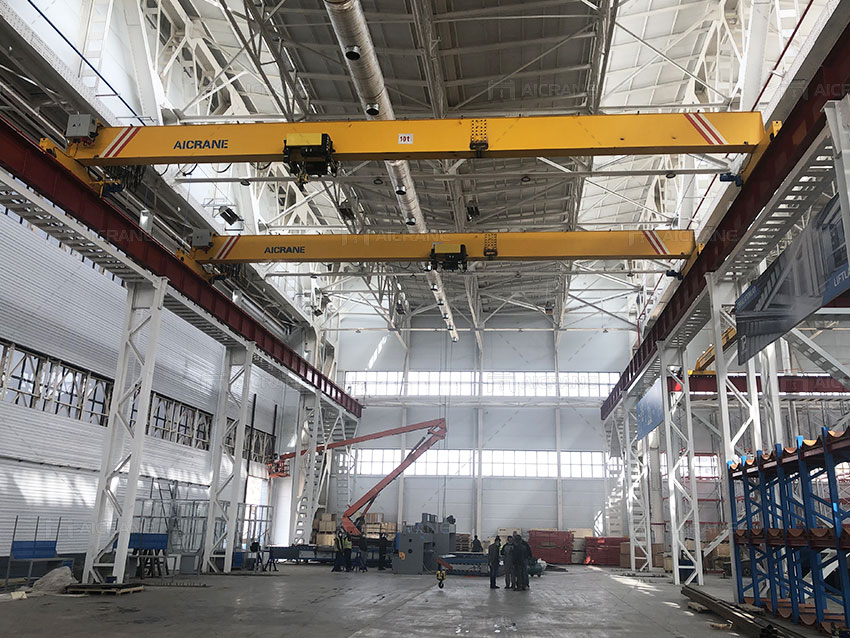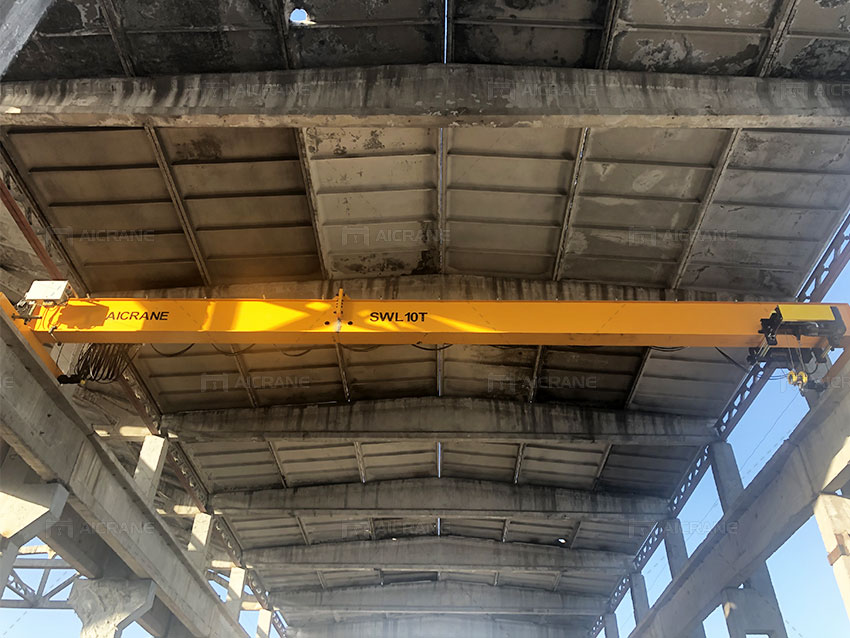Selecting the optimal lifting capacity for your single girder overhead crane is critical to ensuring efficiency, safety, and cost-effectiveness in your operations. The capacity of an overhead crane directly influences how much weight it can lift and move safely. Choosing a crane with the correct capacity not only helps to optimize performance but also helps to avoid unnecessary wear and tear, prevent accidents, and improve overall operational productivity.
In this article, we’ll break down the process of calculating the optimal capacity for a single girder overhead crane. We will explore the factors you need to consider, how to determine your specific requirements, and the methods involved in making an informed decision.

1. Understanding Single Girder Overhead Cranes
Before diving into the calculation, it’s important to first understand what a single girder overhead crane is and its typical use. A single girder overhead crane is a type of bridge crane where a single horizontal beam (the girder) is supported by two end trucks that travel along rails mounted on the ceiling. These cranes are typically used for light to medium-duty lifting tasks, making them ideal for environments such as warehouses, factories, and construction sites.
Single girder cranes come with a variety of lifting capacities, ranging from a few tons to several dozen tons. The crane’s lifting capacity refers to the maximum weight it can safely lift and move.
2. Identifying Your Requirements
To determine the optimal capacity for your single girder overhead crane, the first step is to identify your lifting requirements. This process involves considering the following key factors:
a. Type of Materials to Be Lifted
The type of materials you intend to lift is a fundamental consideration when determining crane capacity. Different materials have different densities and weights. For instance, lifting steel beams, concrete blocks, or machinery components will require more lifting capacity compared to lifting lighter materials like textiles or packaged goods.
Consider the heaviest material you will need to lift regularly and ensure that your crane can handle it. This will likely be the maximum load requirement for your crane.
b. Weight of Loads
Once you know the types of materials you will be lifting, the next step is to calculate the average and maximum weight of the loads. The maximum weight will often be the deciding factor in determining the crane’s capacity.
For example, if you are lifting metal parts that weigh 5 tons on average but occasionally need to lift a load weighing up to 10 tons, you should base your crane capacity on the maximum load of 10 tons, that is, select a 10 ton overhead crane.
c. Frequency of Lifting
The frequency at which you need to lift and move loads will also affect the crane capacity. If your crane will be used for high-frequency tasks, selecting a crane with an adequate lifting capacity that aligns with your needs will ensure smooth operations.
In addition, consider the types of lifts the crane will perform. Will it be used for continuous lifting? Or will it handle intermittent loads with downtime between lifts? Higher frequency operations might require a crane with a higher duty cycle, which is closely related to lifting capacity.

3. Calculating the Load Capacity
After identifying your lifting requirements, the next step is to calculate the optimal load capacity for the single girder overhead crane. Here are some steps involved in making this calculation:
a. Calculate the Maximum Weight of the Load
To calculate the maximum lifting capacity of the single girder eot crane, you must first determine the weight of the heaviest load the crane will need to lift. This can be done by multiplying the volume of the material by its density.
For example:
-
Material: Steel
-
Volume: 10 cubic meters
-
Density of steel: 7850 kg/m³
Weight of the load = Volume × Density = 10 × 7850 = 78,500 kg (or 78.5 tons)
Therefore, the crane should be able to handle at least 78.5 tons if lifting this material. However, this figure is only a guide, as overhead cranes are usually rated in increments of 1 or 5 tons.
b. Consider Additional Factors
In addition to the weight of the load itself, other factors must be taken into account, such as:
-
The weight of lifting accessories: Slings, hooks, and hoists used to lift the load will add additional weight to the overall lifting requirement.
-
Load swings and dynamic loads: When lifting loads, dynamic forces like momentum and sway may increase the effective load the crane needs to handle, especially when lifting large or bulky items. Cranes need to be capable of handling these dynamic forces without failure.
These factors may add an additional 10–15% to the total weight requirement, depending on your lifting conditions.
c. Calculate the Safety Margin
When calculating the optimal capacity, it’s important to factor in a safety margin. A safety margin is the difference between the maximum load and the crane’s rated capacity, which provides a buffer to account for unexpected loads, improper rigging, or other unforeseen factors.
A general rule of thumb is to add a 20–25% safety margin to the calculated maximum load. For instance, if the heaviest load you expect is 50 tons, you should choose a crane with a capacity of 62.5 tons (50 tons + 25%).
4. Considering the Crane’s Duty Class
Overhead cranes are classified based on their duty cycle, which is a measure of how frequently the crane will be used and how long it will be under load. Duty cycles are categorized from light (A1-A3) to heavy-duty (A7-A8). Each class represents the level of use the crane is designed to handle, and the duty cycle impacts the capacity you choose.
-
Light Duty (A1-A3): Low usage with occasional lifting of relatively light loads.
-
Medium Duty (A4-A5): Moderate usage with regular lifting of medium-weight loads.
-
Heavy Duty (A6-A8): Continuous or near-continuous use with heavy loads.
For heavy-duty operations, you’ll need a crane with a higher capacity and durability. If you plan to use the crane for high-frequency operations or frequent heavy lifts, the heavy duty overhead crane should be designed to accommodate that level of demand.
5. Consider Future Requirements
While determining the immediate needs is essential, you should also consider potential future requirements when choosing your crane’s capacity. For instance, if your business plans to scale up operations, expand its product range, or increase the volume of lifting tasks, it may be wise to opt for a crane with a higher capacity to avoid upgrading in the near future.
A crane with slightly more capacity than required can help avoid bottlenecks in the future and ensure your system can handle increased workloads.
6. Conclusion: The Optimal Capacity
To summarize, determining the optimal lifting capacity for your single girder overhead crane involves understanding your operational needs, calculating the maximum load and considering safety margins, factoring in crane duty cycles, and anticipating future demands.
A crane with the correct lifting capacity will help improve operational efficiency, reduce downtime, and increase overall productivity while ensuring safety. Choosing a crane that is too small can result in overloading, increased wear, and potential safety hazards. Conversely, selecting a crane with excessive capacity may lead to higher costs and less efficient performance.
By carefully evaluating your lifting requirements, considering dynamic forces, and factoring in safety margins and duty cycles, you can select the optimal lifting capacity for your crane, ensuring reliable and safe operation for years to come.